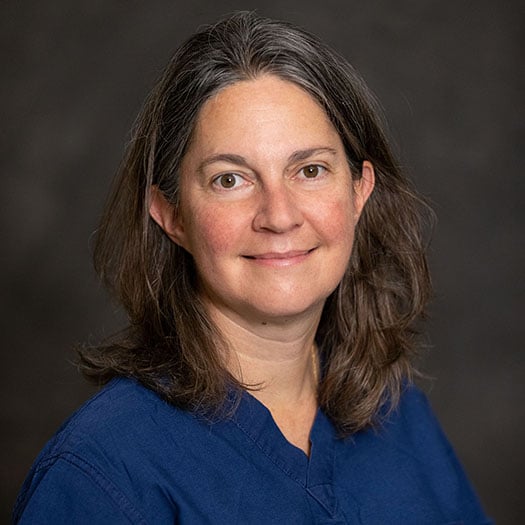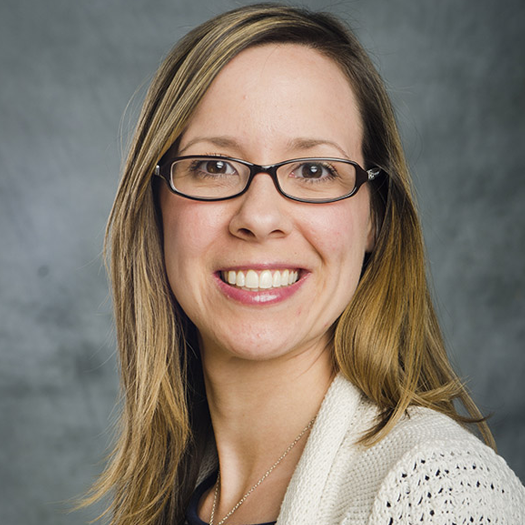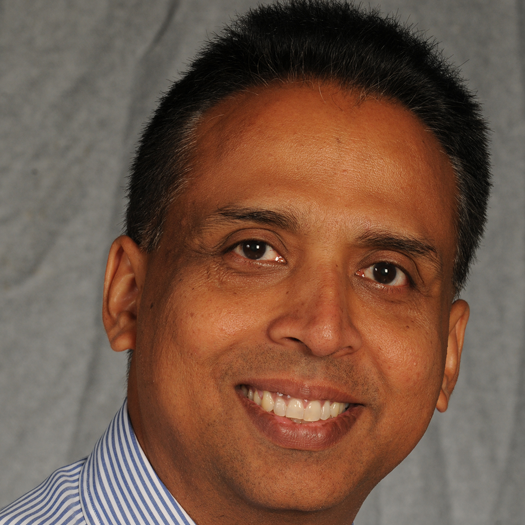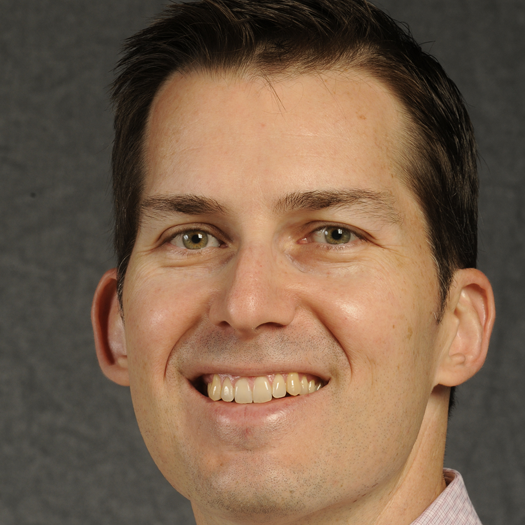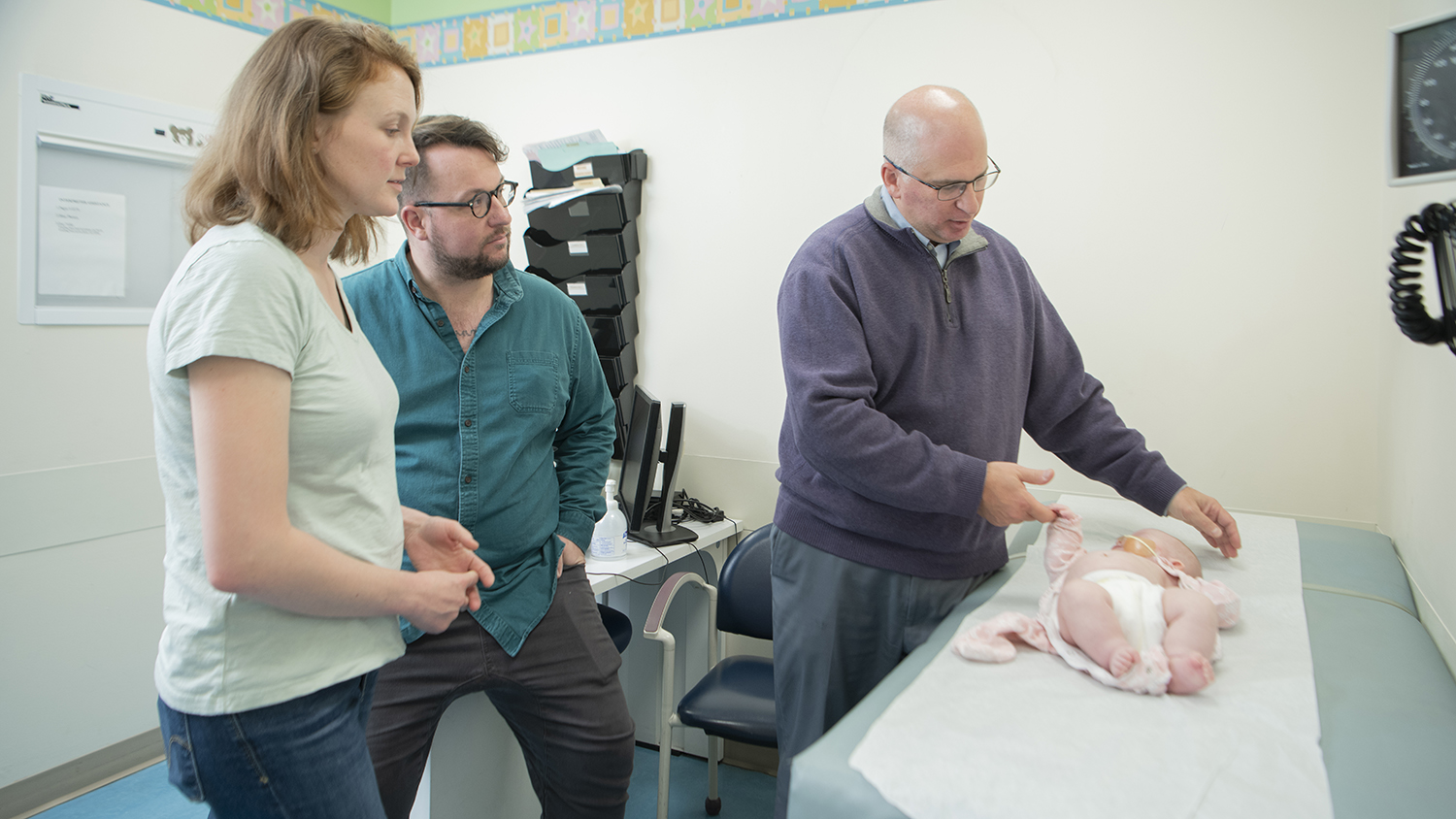Condition
Pediatric Hirschsprung's Disease
What You Need to Know
Hirschsprung's disease is a rare birth defect that affects the nerve cells in the large intestine.Key Symptoms
Symptoms of Hirschsprung's vary by age (see more below), but common symptoms include:
- Constipation
- Loss of appetite
- Watery stool or diarrhea
- Delayed growth
Diagnosis
Diagnostic tests for Hirschsprung's disease include:
- Abdominal X-ray
- Barium enema
- Anorectal manometry
- Biopsy of the rectum or large intestine
Treatment
Treatment depends on your child’s symptoms, age, general health and the severity of their condition. Below are possible surgical options for Hirschsprung's disease:
- Pull-through surgery
- Ostomy surgery
- Colostomy
- Ileostomy
What is Hirschsprung's disease?
Hirschsprung's disease is a rare birth defect. It affects the nerve cells in the large intestine. These nerve cells control the muscles that move food and waste, or stool, through the large intestine. The large intestine is the last part of the digestive tract.
Babies with Hirschsprung's disease are missing nerve cells in all or part of the large intestine. In most cases, only the end parts of the colon are affected. Without these nerve cells, the muscles can’t move food and waste through that part of the large intestine. Stool can’t move forward. It stays in the large intestine.
The intestine can become partly or fully blocked. It begins to grow larger than normal. This can cause constipation, swelling, pain and infection.
What causes Hirschsprung's disease in children?
During pregnancy, a baby’s nerve cells form along the intestines. They begin in the mouth and end in the anus. In babies with Hirschsprung's disease, the nerve cells don’t grow past a certain part of the large intestine. Experts don’t know why this happens.
Which children are at risk for Hirschsprung's disease?
A child is more at risk for Hirschsprung's disease if there is a family history of the disorder. Some genetic syndromes, such as Down syndrome, are also linked with the disorder.
Boys are more likely to have Hirschsprung's disease than girls.
What are the symptoms of Hirschsprung's disease?
Most babies with Hirschsprung's disease have symptoms in the first few weeks of life. In some cases, only a short part of the intestine may be affected. Some children may not show symptoms for up to several months while others become ill very quickly.
Each child’s symptoms may vary. Symptoms in newborns may include:
- Not having a bowel movement in the first 48 hours of life
- Slow swelling or bloating of the belly
- Vomiting green or brown fluid
- Fever
- Diarrhea (enterocolitis)
Children who don’t show early symptoms may also have:
- Constipation that gets worse over time
- Loss of appetite
- Slow or delayed growth
- Small, watery, bloody stools
- Loss of energy
Symptoms in older children include:
- Sepsis
- Severe Constipation
- Loose and watery stools (enterocolitis)
- Loss of appetite
- Delayed growth (failure to thrive)
Symptoms of Hirschsprung's disease may seem like other health problems. See your child's health care provider for a diagnosis.
How is Hirschsprung's disease diagnosed in children?
Your child’s health care provider will do an exam and take a health history. The provider will ask questions about constipation and bowel movements. Other tests may be done to find out if your child has Hirschsprung's disease. These tests may include:
- Abdominal X-ray. This test may show a lack of stool in the large intestine or near the anus. It can also show if part of the large intestine is bulging. The bulging is caused by blocked stool.
- Barium enema. This X-ray exam checks the large intestine for any problems. Your child is given a metallic fluid called barium. Barium coats the organs so they can be seen on an X-ray. The barium is put into a tube and inserted into your child’s rectum as an enema. An X-ray of the belly will show any narrowed areas or any blockages. It will also show if the intestine is bulging above a blockage.
- Anorectal manometry. This test is most often used for older children. A small tube is put into the rectum to check how well the rectal muscles are working. If the muscles don't relax, it may be a sign of Hirschsprung's disease.
- Biopsy of the rectum or large intestine. A tiny piece of the large intestine is removed. It is checked under a microscope to see if any nerve cells are missing.
How is Hirschsprung's disease treated in a child?
Treatment will depend on your child’s symptoms, age and general health. It will also depend on how severe the condition is.
Surgery
Hirschsprung's disease is treated with surgery called a pull-through procedure. A surgeon removes the part of the large intestine that lacks nerve cells. When possible, the healthy part that is left is connected to the anal opening.
In some cases, surgery may be done in two stages. A child who is very sick from Hirschsprung's disease may first need ostomy surgery. This can help the child heal before the pull-through surgery. With ostomy surgery, the diseased part of the large intestine is removed. The end of the healthy intestine is moved to an opening made in the belly. This opening is called a stoma. Stool passes through the stoma and into a bag worn outside the body. The bag must be emptied several times a day.
An ostomy may be short-term or temporary. Or it may be permanent. It depends on how much of the intestine must be removed. If it is short-term, the surgeon will connect the healed intestine to the anus and sew the stoma (opening) closed.
In most cases, the ostomy is temporary. But sometimes children with Hirschsprung's disease must have a permanent ostomy. Infants will feel better after ostomy surgery because they will be able to pass gas and stool easily.
While older children will feel better as well, they must adjust to living with a permanent ostomy. This means learning how to take care of the stoma and how to change the ostomy pouch. Living with an ostomy can be very hard. A special nurse, called an ostomy nurse, can help your child learn how to care for the ostomy. The nurse can also provide emotional support and encouragement.
Colostomy
A colostomy is a surgical procedure that creates an opening for the colon, or large intestine to excrete waste in a small bag located outside of the body. Most babies born with an anorectal malformation will need a temporary colostomy within the first few days of life. The colostomy will ensure the baby can properly pass stool, helps to normalize digestion and greatly reduces the risk of infection.
Ileostomy
If your child has a malformation of the large intestines that interferes with waste existing the body, an ileostomy may be performed. An ileostomy involves connecting a part of the small intestine to a surgical opening in the abdomen that allows feces to move outside of the body into a small pouch. This provides a temporary solution for stool to exit until your child is ready to undergo reconstructive surgery. Once the ileostomy is no longer needed, surgery will be performed to connect the large and small intestine.
Care Following a Pull-Through Procedure for a Child with Hirschsprung's Disease
Learn how to care for your child after their pull-through procedure. Before performing any of steps from this video, consult your child's pediatrician.

What does the recovery process from Hirschprung's disease in children entail?
After surgery your child will likely stay in the hospital for approximately four to seven days. Some children may need to stay longer depending on the severity of their condition. During this time, your child will need plenty of rest and will be given an IV to help stay hydrated.
Prior to leaving the hospital, your medical team will help advise you on how to care for your child once they are home. They will instruct you on how to keep abdominal incisions clean and dry. Because they will be passing stool several times a day, the skin around your child’s anus will require special care to keep it from becoming irritated. Your child’s nurses will tell you what topical medications should be used to provide relief against a rash. If constipation becomes a problem, it’s important to have your child follow a healthy diet, eat plenty of fiber, take medications such as laxatives if necessary and stay hydrated. As your child heals they should begin a bowel management program to facilitate and maintain the best possible bowel function as well as to minimize the possibility of soiling.
Enterocolitis
Some patients may develop enterocolitis, which is an intestinal infection that can cause severe diarrhea. Enterocolitis can occur prior to or after surgery. Your colorectal specialist will treat your child’s enterocolitis with bowel irrigations and antibiotics.
What are possible complications of Hirschsprung's disease in a child?
In Hirschsprung's disease, a part of the large intestine lacks normal nerve cells. This means that digested food and stool can’t move forward through that part of the digestive tract. The large intestine becomes blocked with stool. Your baby will be constipated, or unable to have normal bowel movements.
The blockage creates pressure on the inside of the intestine. This causes part of the intestinal wall to wear thin. Over time, a bacterial infection called enterocolitis can develop in the digestive tract. This is very serious. Symptoms of enterocolitis include:
- Fever
- Swollen belly
- Belly pain
- Vomiting
- Diarrhea
- Bleeding from the rectum
- Lack of energy
Call your child’s healthcare provider right away if your child has any signs of enterocolitis.
How can I help my child live with Hirschsprung's disease?
Your child’s bowel function may be affected after surgery. The most common long-term problems include bowel control and leaking stool, constipation and infections.
Problems that may occur after surgery depend on how much of the intestine lacked nerve cells and how much of it was removed.
Children who are able to have their ostomy closed may have short-term problems after the closure, including:
- Stools may be frequent and loose at first. To prevent skin irritation, try cleaning the anal area carefully to remove stool. Also try using diaper rash creams or lotions.
- Children may have trouble sensing the need to have a bowel movement. The urge to have a bowel movement is greater after eating. It may help to have your child spend 10 minutes after meals on the toilet.
- Some children have problems with bowel movements because the anal opening is tight. A special method called rectal dilation may help. Your child's healthcare provider can teach you this method if it’s right for your child.
Children who had a large part of the intestine removed may have long-term problems. The digestive process can be affected. Nutrients and fluids are absorbed from food in the small intestine. Removing a large segment of the intestine can prevent a child from getting enough nutrients and fluids. Children can have problems with poor digestion, slow growth and infection. Your child may need to eat and drink more to get enough nutrients and fluid.
Talk with your child’s health care provider about your child’s specific situation.
When should I call my child's healthcare provider?
Call your child's healthcare provider if your newborn doesn’t have a bowel movement in the first 48 hours of life.
Call the provider if your infant or child has any of these symptoms:
- Bowel movements are not regular
- Increasing constipation
- Vomiting
If your child has had surgery for Hirschsprung disease, call the provider if your child has:
- Fever
- Vomiting
- Diarrhea
- Belly pain
- Swollen belly or abdomen
- Rectal bleeding
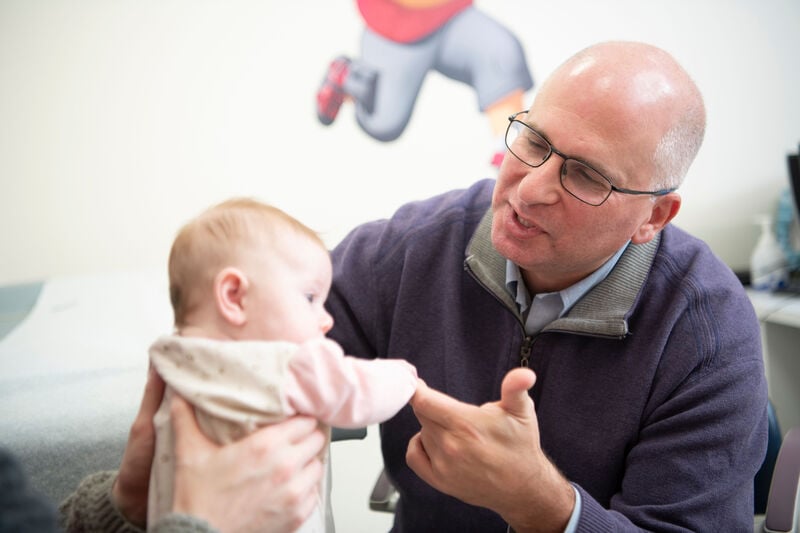
Colorectal Treatment at Children's National Hospital
The Division of Pediatric Colorectal & Pelvic Reconstruction offers the latest advancements in diagnosis and treatment for all types of pediatric colorectal disorders. Discover more about the treatments we offer.

Providers Who Treat Hirschsprung's Disease
Departments that Treat Hirschsprung's Disease
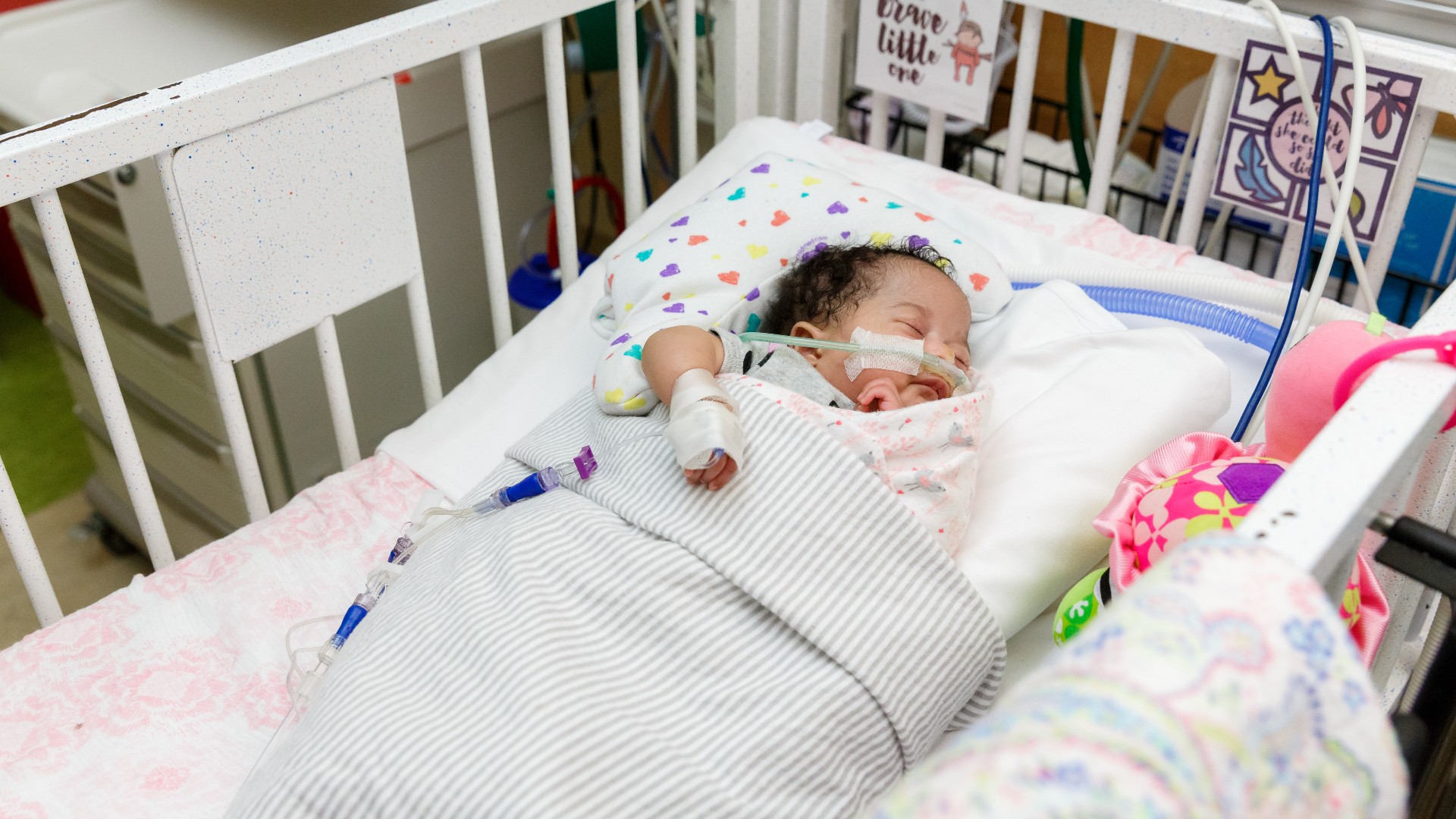
Neonatology
Whether your infant has arrived prematurely or has a critical illness, the Children's National Hospital's top-ranked team assists in coordinating every service you and your baby need, including consultations, assessments, emergency treatments and continuing care.
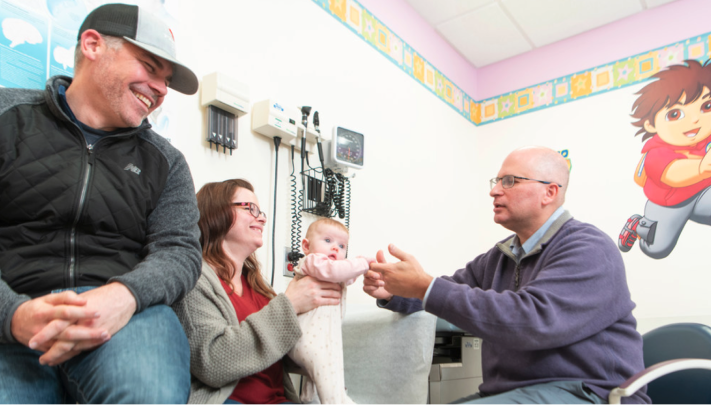
Pediatric Colorectal & Pelvic Reconstruction
The Division of Pediatric Colorectal & Pelvic Reconstruction offers the latest advancements in diagnosis and treatment for all types of pediatric colorectal disorders.





